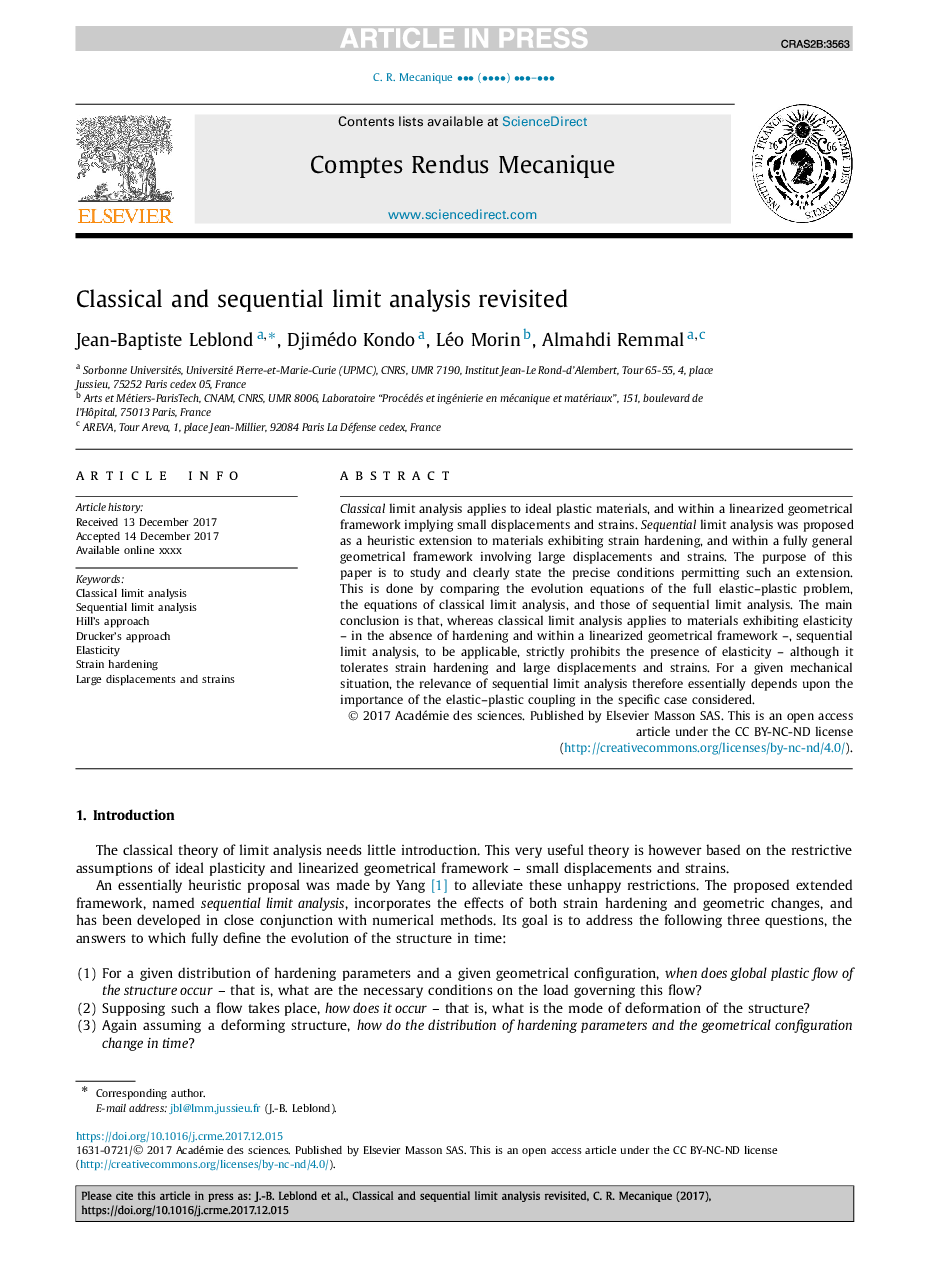| Article ID | Journal | Published Year | Pages | File Type |
|---|---|---|---|---|
| 7216136 | Comptes Rendus Mécanique | 2018 | 14 Pages |
Abstract
Classical limit analysis applies to ideal plastic materials, and within a linearized geometrical framework implying small displacements and strains. Sequential limit analysis was proposed as a heuristic extension to materials exhibiting strain hardening, and within a fully general geometrical framework involving large displacements and strains. The purpose of this paper is to study and clearly state the precise conditions permitting such an extension. This is done by comparing the evolution equations of the full elastic-plastic problem, the equations of classical limit analysis, and those of sequential limit analysis. The main conclusion is that, whereas classical limit analysis applies to materials exhibiting elasticity - in the absence of hardening and within a linearized geometrical framework -, sequential limit analysis, to be applicable, strictly prohibits the presence of elasticity - although it tolerates strain hardening and large displacements and strains. For a given mechanical situation, the relevance of sequential limit analysis therefore essentially depends upon the importance of the elastic-plastic coupling in the specific case considered.
Related Topics
Physical Sciences and Engineering
Engineering
Engineering (General)
Authors
Jean-Baptiste Leblond, Djimédo Kondo, Léo Morin, Almahdi Remmal,
